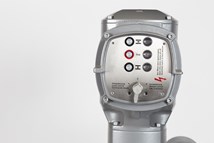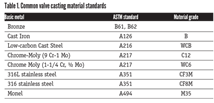Notes on a Notable Career: Former VMA Chairman Tom Mignogna
Like many of the valve industry icons we’ve interviewed, Tom Mignogna’s notable career in the valve industry started out not so much by design, perhaps, but by good fortune.
#VMAnews
Mignogna joined the Limitorque Corporation in 1961, initially working in the electrical engineering section for several years. In 1970, he moved from his division, which was part of the Philadelphia Gear Corporation to Lynchburg, VA, to take over the manufacturing plant there. After several years he became vice president and eventually senior VP for the company’s manufacturing worldwide. In 1981, he was appointed president, CEO in 1982 and finally chairman 1991. For a while, he held all three titles at once.
Not bad for someone who says about choosing Limitorque, “I didn’t go after the business. I was just a young guy at the time and really didn’t know what Limitorque did when I started with the company,” he reminisced. “I had worked with the Pennsylvania railroad in the early years, so I had an appreciation for actuators in general, but didn’t know much about the actuator business itself. I just felt that it looked like a good growth opportunity.”
Moving up the Ranks at VMA
His first exposure to VMA came through the president of the Limitorque group. Mignogna remembers Martin Donze as the man who first took Limitorque to VMA meetings. Donze was also a fellow Drexel University College of Engineering graduate, very active in the association and the person who promoted Mignogna to plant manager.
VMA became a part of Mignogna’s life when, in the early 1970s, the association decided to hold its annual meeting at The Homestead in VA. “That resort is about an hour and a half north of Lynchburg, and for one of the field trips, VMA brought the whole group down to Lynchburg. Limitorque hosted a dinner meeting at the Oakwood Country Club, and I got to know a lot of people at that meeting and subsequently started to attend the sessions,” remembered Mignogna. “At that time, I was VP of manufacturing so I started by attending some of the manufacturing seminars, which were very good, and some of the other meetings. In later years I started to attend the annual meeting and from there moved up through the ranks of the VMA.”
While it may have been a memorable occasion, the 50th anniversary was certainly not the only event of note in his history with VMA. In 1991, Mignogna became chairman of the association. “I was the first actuator person to be chairman of the VMA. Prior to that it was always somebody from a valve company,” he said. “Since that time, several others from actuator companies have become chair, but that was a first.” Mignogna was also the first in his position to take the VMA off U.S. soil. “We had the annual meeting up in Vancouver, B.C.; that was the first and only year we were up in Canada. It was a great venue,” he recalled.
The European Connection
During his tenure as chairman, Mignogna also opened up communication with the valve organization in Europe. “CEIR, the Committee for European Valves, was made up of 12 companies at the time. We had always had a somewhat adversarial relationship because we were all in the same business as competitors, but we had a lot in common as well. So I felt we needed to open up some communication since many of our companies were doing business in Europe.”
Mignogna went to Frankfurt and met with the chairman of that organization and recommended that VMA and CEIR get together to just share some information, keeping in mind, of course, anti-trust issues. He remembered, “The chairman agreed and after he checked with his committee he called back and invited us over.”
Steve Larkin, then president of the VMA, international manager Barbara McMurray, Mignogna as chairman and Gil Richards of Richards Industries, also a VMA member, sat in on the CEIR board meeting and addressed the board. “We told them what we were doing and they told us a bit about what they were doing.”
Mignogna continued: “The group started playing a song from each of the countries represented and they were pretty good. I’m an old bass fiddle player, and I sat in to play with the band. I played three or four tunes. When I got back to the table, the German representative started talking to me. He said he was a jazz pianist and that really did break the ice. “
While the relationship with CEIR was somewhat reserved in the beginning, it has improved over the years to the point that the VMA delegation is invited to attend all sessions. “Someone from the VMA has been going over every year since then,” he said. “Now it’s pretty well open arms and one of our past chairmen, David Moser, goes over every year to whichever country it’s in that year.”
The Strength of VMA
“The members are the biggest asset of the VMA,” Mignogna said. “A lot of other organizations do not function as well as we do. We have a lot of participation by the members, a lot of committees; we conduct a lot of seminars. All of those meetings and committees are made up of people from the membership. It is a unique association because people really do get involved.”
Not Exactly Retired
While Mignogna is officially retired, he is definitely not resting on his laurels. Four years after retiring from Limitorque, Mignogna and eight other businessmen started the Community First Bank in Lynchburg and Mignogna was Chairman of the bank for five years until they were bought out. Then he and Bob McCray (formerly of Worcester Valve) joined forces to help MaxTorque when they were first starting up. “It’s a lot of fun to help, and see how they got up and running,” he said. “It is a good product and we enjoyed helping them.”
Another project Mignogna took on after retiring was to work with VMA staff on a membership campaign: “I had an assignment from VMA to go out and talk to new members. I travelled all over the U.S. to get people interested in the association.” Altogether, Mignogna brought in 12 new members.
Looking Ahead
Mignogna chucked when asked about the economy. “I can’t speak to that, I’m not that smart, but one thing I would like to see, and I think we’re beginning to see it, is bringing business back to the United States. The valve companies have gone offshore and are bringing components in. That’s not so bad, but when all of the manufacturing goes offshore, you’re losing jobs.
“One of the problems with all of that is the competitive nature of the products they’re selling; the more competitive they get, the more cost conscious they get, and move it offshore. But I think as we move forward we’re going to see recognition that wasn’t such a good idea.”
Mignogna pointed out an example when the dockworkers went on strike in Los Angeles in 2012. “You just couldn’t get product in. We couldn’t get it to the east coast. Cost going through the Panama Canal was prohibitive and the amount of time it would take was huge. I think that was a lesson.”
Asked if he had any parting words of wisdom, Mignogna reiterated his view of how a company can benefit from being a part of VMA: “To get the most out of your membership, it’s important that you get involved.”
Kate Kunkel is senior editor of VALVE Magazine. Contact her at kkunkel@vma.org.
RELATED CONTENT
-
Check Valves: The Most Important Valves in Your Process System
Check valves, as critical as they are for flow system performance, often don’t receive the respect they are due, said Arie Bregman, vice president and general manager, DFT, Inc., in a recent VMA presentation.
-
Crane ChemPharma and Energy Announces New Saunders Valves Facility
The 100,000-sq-ft facility is planned to open in the fall of 2022.
-
Standards for Actuator/Gearbox Flanges
“Many variations in valve and actuator dimensions and characteristics have come into play especially now that we have worldwide vendors,” said Paul Souza, training manager at AUMA Actuators in a presentation at the Valve Manufacturers Association Virtual Valve Forum in November 2020.











 Unloading large gate valve.jpg;maxWidth=214)


